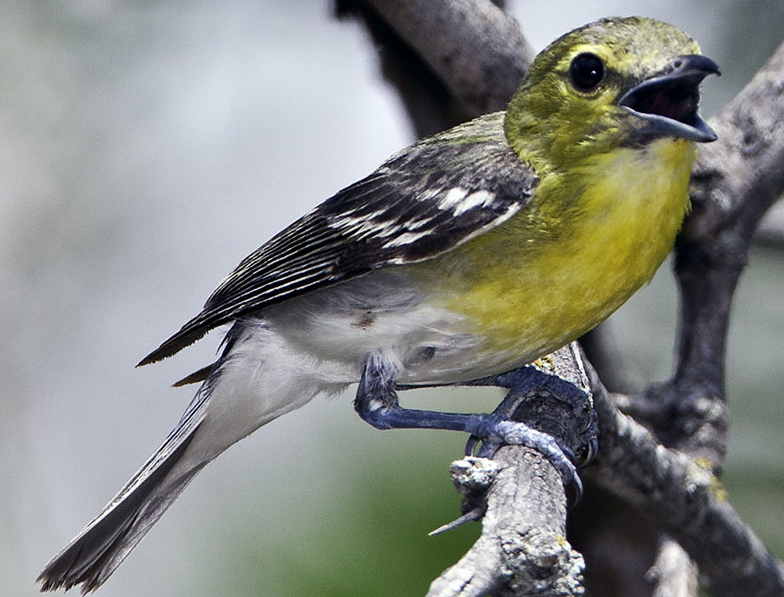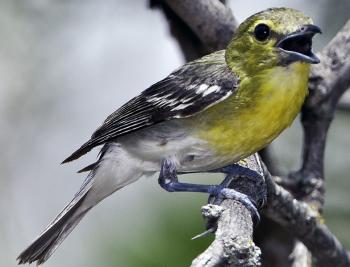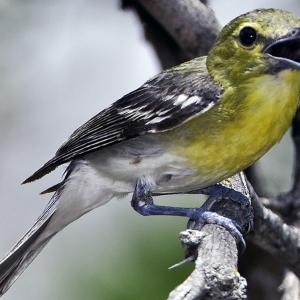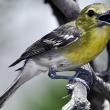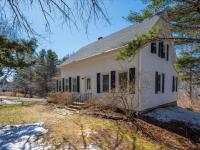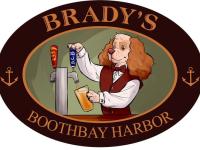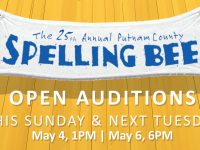Searching for an old (bird) friend on the edge
This past weekend we stopped at one of four avorite old familiar birding haunts in central Maine, a place known locally as “the Waugon” in Monmouth. We have been visiting the site for at least 30 years (a review of our records may find it’s been even longer). There Waugon is a spot where a stream flows into the west side of Annabessacook Lake, draining from Wilson Pond. From Wilson Pond it would have been a relatively short distance to carry a canoe into Androscoggin Lake. Indeed the indigenous Abenakis were known to have used this route historically to get from the Kennebec River in Gardiner into the Androscoggin watershed to access the western interior of Maine and eastern New Hampshire. We know that the name of the lake has its origin in the Abenaki language and have always assumed that the word “waugon” might also be from that language, but we have so far not been able to find what the word might mean.
The Waugon is located on the Waugon Road (of course) in Monmouth, a few miles south of Route 202 where a small bridge crosses the inlet. It is an interesting spot with some fairly extensive cattail marsh along both sides of the inlet, which harbors breeding marsh wrens, swamp sparrows, and at least in the past, American bitterns. The shores are a mature forest of maples, oaks, hemlock, and other trees. But what always made the place special for us and many other birders has been the fact that it has hosted breeding yellow-throated vireos for at least 40 years. Yellow-throated vireos are just as their name suggests: birds with bright yellow throats. They also have bright yellow “spectacles”—a ring around the eye with a line down to the base of the bill like old-fashioned eyeglasses. The most distinctive thing about the yellow-throated vireo, though, is probably its song: a slow, burry rendition of the sing-song phrases of the familiar red-eyed vireo which itself sounds to some ears sounds a bit robin-like.
Here in Maine we birders get excited to hear and see yellow-throated vireos because it is a species that reaches the northern edge of its breeding range right in the central part of our state. If you birded your way south from here you would find yellow-throated vireos all the way south to Florida, but if you birded your way north you might see your last one around Waterville and then no more!
By our count there are about 80 of the 200 or so breeding bird species of Maine that, like the yellow-throated vireo, reach the edge of their range in our state. That’s a surprising 40 percent of all of the birds that nest here. Some of these, like the yellow-throated vireo, reach their northern limits in Maine. Others, including another vireo—the Philadelphia vireo—hit the southern edge of a much more extensive breeding distribution that often ranges across much of Canada.
One of the reasons that the Maine Bird Atlas project (which we have written about in this column a number of times) is so important is that it can document any changes in the edges of the ranges of birds. Southern birds may see a northward shift in their breeding range. Along with yellow-throated vireo, we want to see where the current northern range edge is for Louisiana waterthrush, prairie warbler, pine warbler, tufted titmouse, Carolina wren, brown thrasher, northern mockingbird, and many other species. Northern birds may be retracting the southern edge of their range northward. The Atlas project may help to see if the gray jay, boreal chickadee, spruce grouse, Cape May warbler, bay-breasted warbler, and many others has shifted their range north.
We didn’t find our old friend the yellow-throated vireo on our visit. But other birders who had visited the Waugon earlier in the season had indeed met up with its burry song and documented its presence for the Atlas. Is this spot the last, most northernly outpost for the species? Only time and the diligent searching of more volunteer birders will tell!
Jeffrey V. Wells, Ph.D., is a Fellow of the Cornell Lab of Ornithology. Dr. Wells is one of the nation's leading bird experts and conservation biologists and author of “Birder’s Conservation Handbook”. His grandfather, the late John Chase, was a columnist for the Boothbay Register for many years. Allison Childs Wells, formerly of the Cornell Lab of Ornithology, is a senior director at the Natural Resources Council of Maine, a nonprofit membership organization working statewide to protect the nature of Maine. Both are widely published natural history writers and are the authors of the book, “Maine’s Favorite Birds” and the newly published “Birds of Aruba, Bonaire, and Curaçao” from Cornell Press.
Event Date
Address
United States

